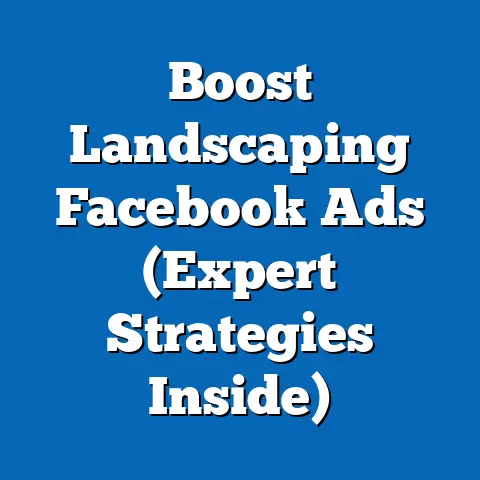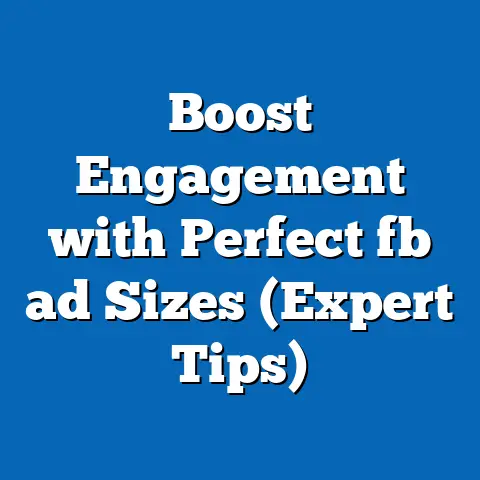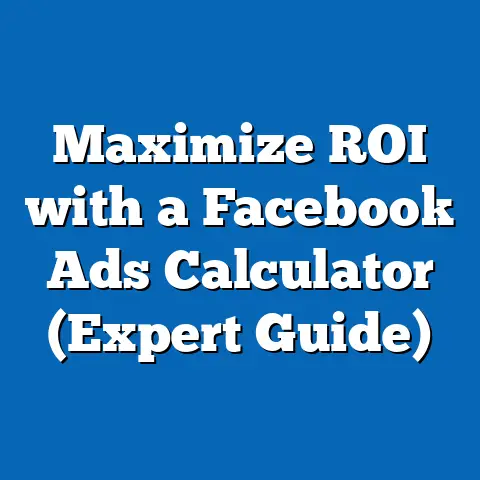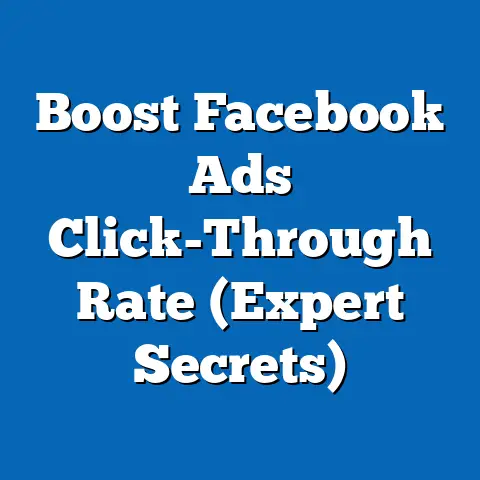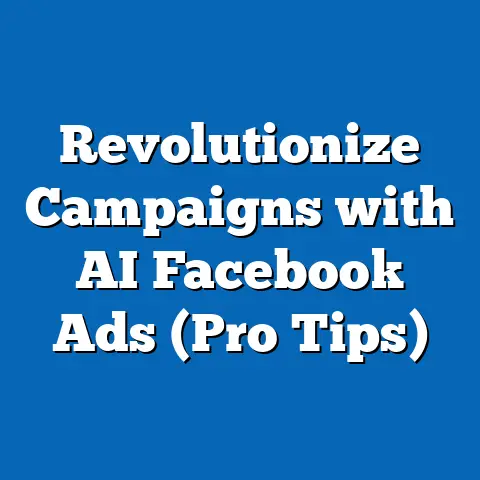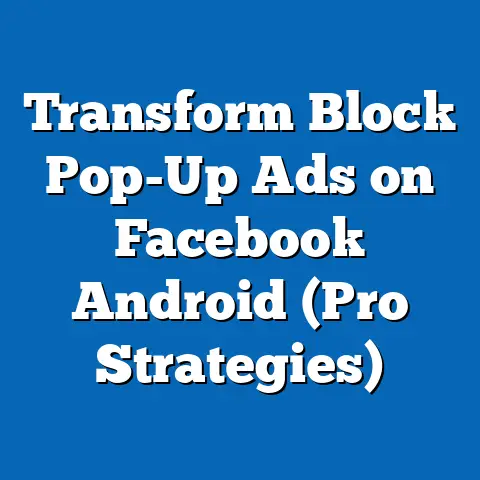Boost Facebook Ads with Emojis (Unlock Engagement Secrets)
“In the world of digital marketing, engagement is the currency of success. The more you connect with your audience, the more they will connect with your brand.” – Neil Patel
Neil Patel’s words resonate deeply with my own experiences in the digital marketing world. I’ve seen firsthand how fostering genuine engagement can transform a campaign from a mere advertisement into a meaningful conversation. In today’s fast-paced digital landscape, grabbing attention is harder than ever. That’s where the humble emoji comes in. Often dismissed as frivolous, emojis can be powerful tools for enhancing engagement, creating a friendly tone, and conveying emotions quickly and effectively in your Facebook ads. In this guide, I’ll delve into the world of emojis in Facebook advertising, sharing my insights and strategies to help you unlock their engagement secrets.
The Psychology Behind Emojis in Advertising
Emojis are more than just cute little pictures; they’re deeply rooted in human psychology. They tap into our innate ability to understand and process visual cues, allowing us to convey complex emotions and ideas in a concise and relatable way. Think about it: a simple smiley face 😊 can instantly convey warmth and friendliness, while a thumbs-up 👍 can signal approval and agreement.
From a psychological perspective, emojis act as emotional triggers. They activate the same areas of the brain that respond to real-life facial expressions and body language. This emotional connection can make your brand more relatable and human, fostering a sense of trust and connection with your audience.
Several studies have shown the positive impact of emojis on consumer behavior. For instance, a study by HubSpot found that using emojis in email subject lines increased open rates by 56%. While this study focuses on email, the underlying principle applies to Facebook ads as well. Emojis can cut through the noise and grab attention, leading to higher click-through rates (CTR) and engagement.
I remember a campaign I ran for a local bakery. We A/B tested two versions of the same ad, one with a slice of cake emoji 🍰 and the other without. The ad with the emoji saw a 20% increase in CTR. It was a simple change, but it made a significant difference. The emoji added a touch of fun and personality, making the ad more appealing to our target audience.
Key Takeaway: Emojis are powerful psychological tools that can evoke emotions, create a relatable brand image, and increase engagement rates in your Facebook ads.
Why Facebook Ads?
Facebook remains a dominant force in the digital advertising landscape. With billions of active users worldwide, it offers unparalleled reach and targeting capabilities for businesses of all sizes. According to Statista, as of the first quarter of 2024, Facebook boasts nearly 3.07 billion monthly active users. That’s a massive audience waiting to be engaged!
However, the very popularity of Facebook as an advertising platform presents unique challenges. Advertisers face fierce competition for attention in a crowded news feed. Ad fatigue is a real concern, as users are constantly bombarded with marketing messages. Standing out from the crowd requires creativity, innovation, and a deep understanding of your target audience.
I’ve seen countless campaigns struggle to gain traction on Facebook due to a lack of engagement. Ads that are bland, generic, or irrelevant simply get lost in the shuffle. That’s where emojis can make a real difference. They can inject personality and emotion into your ads, making them more eye-catching and memorable.
Key Takeaway: Facebook offers unparalleled reach for advertisers, but the platform’s competitive landscape requires creative strategies to overcome ad fatigue and capture attention. Emojis can be a valuable tool for achieving this.
The Role of Emojis in Facebook Ads
Emojis come in a wide variety of styles and categories, from classic smileys to objects, symbols, and even flags. Understanding the meaning and connotations of different emojis is crucial for using them effectively in your Facebook ads.
-
Smileys: These are the most common and versatile emojis, used to express a range of emotions from happiness 😊 to sadness 😢.
-
Objects: These emojis represent everyday items like food 🍕, drinks ☕, and transportation 🚗. They can be used to add context and relevance to your ads.
-
Symbols: These emojis include hearts ❤️, stars ⭐, and checkmarks ✅. They can be used to highlight key points or emphasize positive attributes.
Smileys: These are the most common and versatile emojis, used to express a range of emotions from happiness 😊 to sadness 😢.
Objects: These emojis represent everyday items like food 🍕, drinks ☕, and transportation 🚗. They can be used to add context and relevance to your ads.
Symbols: These emojis include hearts ❤️, stars ⭐, and checkmarks ✅. They can be used to highlight key points or emphasize positive attributes.
Different emojis can be used to target specific demographics and enhance the message of your ad. For example, using a graduation cap emoji 🎓 in an ad for a university might resonate well with prospective students. Similarly, using a baby emoji 👶 in an ad for baby products can effectively target new parents.
I’ve seen some truly creative uses of emojis in Facebook ads. One of my favorites was an ad for a travel agency that used a series of emojis to represent different destinations. The ad featured emojis like 🌴 for tropical beaches, 🏔️ for mountains, and 🗼 for Paris. It was a visually appealing and engaging way to showcase the agency’s offerings.
Key Takeaway: Understanding the different types of emojis and their meanings is crucial for using them effectively in your Facebook ads. Tailor your emoji selection to your target audience and the message of your ad.
Best Practices for Using Emojis in Facebook Ads
Using emojis effectively in Facebook ads requires a strategic approach. Here are some best practices to keep in mind:
-
Keep it relevant: The emoji should align with the ad’s message and target audience. Don’t use emojis just for the sake of using them.
-
Limit the number: Too many emojis can clutter your ad and distract from the message. Stick to one or two emojis per ad.
-
Test different emojis: A/B testing is crucial for determining which emojis resonate best with your target audience. Try different emojis and track their performance.
-
Know your audience: Different demographics respond to emojis differently. Research your target audience to understand their preferences and use emojis accordingly.
Keep it relevant: The emoji should align with the ad’s message and target audience. Don’t use emojis just for the sake of using them.
Limit the number: Too many emojis can clutter your ad and distract from the message. Stick to one or two emojis per ad.
Test different emojis: A/B testing is crucial for determining which emojis resonate best with your target audience. Try different emojis and track their performance.
Know your audience: Different demographics respond to emojis differently. Research your target audience to understand their preferences and use emojis accordingly.
I always advise my clients to start with A/B testing. It’s the best way to learn what works and what doesn’t. For example, I worked with an e-commerce client who was selling fitness apparel. We tested two versions of their ad, one with a muscle emoji 💪 and the other with a running shoe emoji 👟. The ad with the muscle emoji performed significantly better, suggesting that their target audience was more interested in building strength than endurance.
Key Takeaway: Follow these best practices to ensure that you’re using emojis effectively in your Facebook ads. A/B testing is crucial for optimizing your emoji strategy.
Tools and Resources for Emoji Integration
Fortunately, integrating emojis into your Facebook ads is easier than ever. There are numerous tools and resources available to help you find, select, and use emojis effectively.
-
Emoji Keyboards and Websites: Websites like Emojipedia and Get Emoji offer comprehensive libraries of emojis that you can easily copy and paste into your ads. Most smartphones and computers also have built-in emoji keyboards.
-
Graphic Design Tools: Tools like Canva and Adobe Spark allow you to easily integrate emojis into your ad graphics. These tools offer a wide range of templates and design elements to help you create visually appealing ads.
Emoji Keyboards and Websites: Websites like Emojipedia and Get Emoji offer comprehensive libraries of emojis that you can easily copy and paste into your ads. Most smartphones and computers also have built-in emoji keyboards.
Graphic Design Tools: Tools like Canva and Adobe Spark allow you to easily integrate emojis into your ad graphics. These tools offer a wide range of templates and design elements to help you create visually appealing ads.
Tracking the performance of your emoji-embedded ads is essential for measuring their effectiveness. Facebook Insights provides valuable data on engagement metrics like likes, shares, and comments. You can also use third-party analytics tools to track more advanced metrics like CTR and conversion rates.
I’ve found that using UTM parameters is a great way to track the performance of different ads in Google Analytics. By adding UTM parameters to your ad URLs, you can easily see which ads are driving the most traffic and conversions.
Key Takeaway: Utilize these tools and resources to streamline the process of integrating emojis into your Facebook ads. Track your ad performance to measure the effectiveness of your emoji strategy.
Analyzing the Impact of Emojis on Ad Performance
Measuring the effectiveness of emojis in your Facebook ads requires a data-driven approach. Focus on key engagement metrics like likes, shares, and comments. A significant increase in these metrics suggests that your emoji strategy is resonating with your target audience.
However, engagement metrics are just one piece of the puzzle. It’s also important to track metrics like CTR and conversion rates. A higher CTR indicates that your ad is more eye-catching and relevant, while a higher conversion rate indicates that your ad is effectively driving sales or leads.
I’ve seen numerous case studies that illustrate the positive impact of emojis on ad performance. For example, a study by WordStream found that using emojis in Facebook ads increased CTR by 241%. While these results may not be typical, they highlight the potential of emojis to significantly improve your ad performance.
Key Takeaway: Track key engagement metrics, CTR, and conversion rates to measure the effectiveness of emojis in your Facebook ads. Look for significant increases in these metrics to validate your emoji strategy.
Real-World Examples of Emoji Success
Let’s dive into some real-world examples of how brands are leveraging emojis in their Facebook ads to drive engagement and achieve their marketing goals:
1. Domino’s Pizza: Domino’s has consistently used emojis in their marketing campaigns, including Facebook ads. They often use the pizza emoji 🍕 to promote special offers and discounts. This simple yet effective approach makes their ads more visually appealing and relatable to their target audience.
Learning Points:
- Copy and Messaging Strategy: Short, punchy copy combined with a relevant emoji.
- Visual Design Elements: High-quality image of the pizza, making it visually appealing.
- Call-to-Action Approach: Clear and direct call-to-action, such as “Order Now.”
- Audience Targeting Insights: Targeting users interested in pizza, food delivery, and fast food.
2. Netflix: Netflix uses emojis to promote their shows and movies on Facebook. They often use emojis that are relevant to the specific content they’re promoting, such as a ghost emoji 👻 for a horror movie or a laughing emoji 😂 for a comedy show.
Learning Points:
- Copy and Messaging Strategy: Using emojis to hint at the genre or theme of the show.
- Visual Design Elements: Eye-catching visuals that complement the emoji and the show’s theme.
- Call-to-Action Approach: Encouraging users to “Watch Now” or “Learn More.”
- Audience Targeting Insights: Targeting users based on their viewing history and preferences.
3. Starbucks: Starbucks often uses emojis in their Facebook ads to promote seasonal drinks and special offers. They might use a coffee cup emoji ☕ to promote their regular drinks or a snowflake emoji ❄️ to promote their winter menu.
Learning Points:
- Copy and Messaging Strategy: Creating a sense of excitement and anticipation for new products.
- Visual Design Elements: Visually appealing images of the drinks, making them look irresistible.
- Call-to-Action Approach: Encouraging users to “Try It Now” or “Visit Your Local Starbucks.”
- Audience Targeting Insights: Targeting users interested in coffee, tea, and Starbucks.
4. Sephora: Sephora uses emojis in their Facebook ads to promote beauty products and makeup tutorials. They might use a lipstick emoji 💄 to promote a new lipstick shade or a brush emoji 🖌️ to promote a makeup tutorial.
Learning Points:
- Copy and Messaging Strategy: Using emojis to highlight the key features of the product.
- Visual Design Elements: High-quality images or videos of the products in action.
- Call-to-Action Approach: Encouraging users to “Shop Now” or “Learn More.”
- Audience Targeting Insights: Targeting users interested in makeup, beauty, and skincare.
5. Nike: Nike uses emojis in their Facebook ads to promote their athletic apparel and shoes. They might use a running emoji 🏃 to promote their running shoes or a basketball emoji 🏀 to promote their basketball apparel.
Learning Points:
- Copy and Messaging Strategy: Using emojis to convey a sense of energy and athleticism.
- Visual Design Elements: Dynamic images or videos of athletes wearing Nike products.
- Call-to-Action Approach: Encouraging users to “Shop Now” or “Find Your Gear.”
- Audience Targeting Insights: Targeting users interested in sports, fitness, and Nike.
These examples demonstrate the versatility of emojis and their potential to enhance the effectiveness of Facebook ads across various industries.
Common Pitfalls to Avoid
While emojis can be powerful tools, it’s important to avoid common pitfalls that can undermine your efforts.
-
Overuse: As I mentioned earlier, too many emojis can clutter your ad and distract from the message.
-
Irrelevance: Using emojis that are not relevant to your ad’s message can confuse your audience and diminish your credibility.
-
Misinterpretation: Some emojis can be interpreted differently depending on the context and the audience. Be mindful of potential misinterpretations and choose your emojis carefully.
Overuse: As I mentioned earlier, too many emojis can clutter your ad and distract from the message.
Irrelevance: Using emojis that are not relevant to your ad’s message can confuse your audience and diminish your credibility.
Misinterpretation: Some emojis can be interpreted differently depending on the context and the audience. Be mindful of potential misinterpretations and choose your emojis carefully.
I once saw an ad for a funeral home that used a praying hands emoji 🙏. While the intention was to convey sympathy and support, the emoji came across as insensitive and inappropriate. This is a prime example of how a seemingly harmless emoji can backfire if not used thoughtfully.
Key Takeaway: Avoid these common pitfalls to ensure that you’re using emojis effectively and appropriately in your Facebook ads.
Conclusion
Emojis are more than just cute little pictures; they’re powerful tools for boosting engagement in your Facebook ads. By tapping into human psychology and conveying emotions quickly and effectively, emojis can help you cut through the noise and connect with your audience on a deeper level.
Remember to follow the best practices outlined in this guide, including keeping your emojis relevant, limiting their number, testing different options, and knowing your audience. Utilize the tools and resources available to you, and track your ad performance to measure the effectiveness of your emoji strategy.
Experiment with emojis in your own campaigns and unlock new levels of audience interaction and brand connection. The possibilities are endless!
Call to Action
Now it’s your turn! Share your experiences with emojis in advertising in the comments below. What emojis have worked well for you? What challenges have you faced? I’m eager to hear your insights and learn from your experiences.
And if you found this guide helpful, be sure to follow my blog or subscribe for more insights on digital marketing trends. Together, we can unlock the full potential of Facebook advertising!

